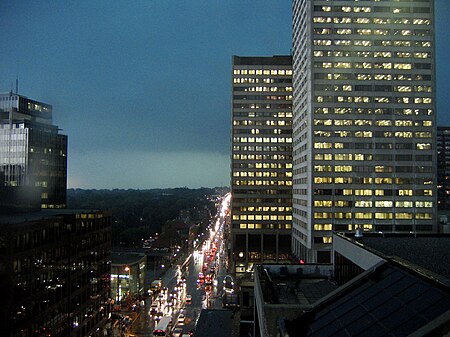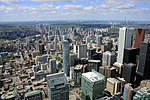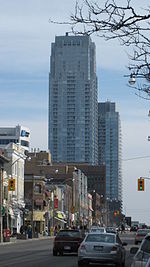Yonge Eglinton Centre
Buildings and structures in TorontoCanadian building and structure stubsModernist architecture in Canada

Yonge Eglinton Centre is a complex of two office buildings located on the northwest corner of Yonge and Eglinton in Toronto, Ontario, Canada, including a small shopping concourse. It is located across the street from Canada Square and, at time of construction, two of only a few large office towers found north of Bloor Street. It is connected via tunnel to Eglinton subway station. The complex is undergoing a refit that will see 7 floors added to the 2300 Yonge Street and 5 floors added to 20 Eglinton Avenue West, as well as re-cladding the towers with curtain wall glass.
Excerpt from the Wikipedia article Yonge Eglinton Centre (License: CC BY-SA 3.0, Authors, Images).Yonge Eglinton Centre
Yonge Street, Old Toronto
Geographical coordinates (GPS) Address External links Nearby Places Show on map
Geographical coordinates (GPS)
| Latitude | Longitude |
|---|---|
| N 43.707245 ° | E -79.39903 ° |
Address
Yonge-Eglinton Centre
Yonge Street 2300
M4P 1E4 Old Toronto
Ontario, Canada
Open on Google Maps









